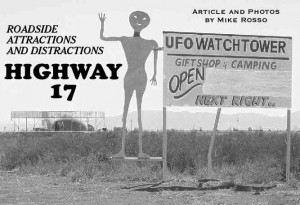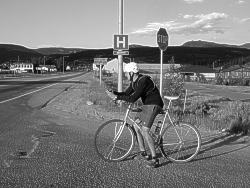Review by Lynda La Rocca
Colorado Wines – October 2002 – Colorado Central Magazine
The Story of Colorado Wines
by Abbott Fay
Published in 2002 by Western Reflections Publishing Company
ISBN 1-890437-73-5
I love Colorado wines. I have followed the growth of this industry, and imbibed in its exceptional products, for more than 15 years, ever since my husband Steve and I were introduced to Colorado-grown wines at Colorado Mountain Vineyards, located in the small town of Palisade on Colorado’s Western Slope.
So a wine book dedicated “to Ann Seewald and the memory of Jim Seewald,” the founders of Colorado Mountain Vineyards (now called Colorado Cellars, the state’s oldest operating winery) immediately finds a place in my heart. Without the Seewalds and Gerald and Mary Ivancie, who established Colorado’s first commercial winery and to whom The Story of Colorado Wines is also dedicated, who knows if there would even be a wine industry in Colorado?
While I never met the Ivancies, I do know Ann Seewald and I knew her late husband Jim. They were talented, dedicated, creative winemakers who spearheaded the effort to establish winegrowing as a viable enterprise in Colorado. Many people have forgotten, or perhaps never even knew of, the extraordinary contributions these two couples made to this industry.
So author Abbott Fay has done his homework when he gives the Seewalds and the Ivancies prominent mention in his book.
That said, this slim volume (118 pages, including the index) is more a guidebook than a true “story” of Colorado wines. In the first 25 pages, Fay does provide an interesting history of Colorado agriculture, concentrating on the Western Slope and its agricultural products, and including Prohibition’s disastrous effects on the state’s grape-growing efforts.
There’s a separate section on the Ivancies’ and the Seewalds’ roles in founding Colorado’s modern wine industry, a brief explanation of the vagaries of judging wine — which basically reiterates a truism that good wine is wine you like — and an explanation of Colorado grape cultivation and winemaking. There are also separate maps showing the statewide locations of 37 Colorado wineries and the sites of wineries in the Palisade/Grand Junction-area’s Grand Valley, which is one of the state’s two federally-designated viticultural areas.
The bulk of the book consists of brief sketches of each Colorado winery supported by black-and-white photographs. Included is such information as the winery’s address and telephone number; backgrounds of owners and winemakers, who are sometimes one and the same; types of varietal wines, blends, fruit, and/or honey wines produced; winery features such as tasting rooms, conference facilities, picnic areas, and special events; some winery awards; and anecdotes ranging from the legend of the Angel of Shavano to a history of mead, a word used to describe an alcoholic beverage made from honey.
Fay, a retired history professor from Western State College in Gunnison, makes it clear early on that his book does not judge the quality of individual Colorado wines or wineries. In a way, that’s a shame because Colorado, like any other wine region, produces wines ranging from the sublime to the abysmal. While it might save oenophiles a lot of time and money to know which is which, part of the fun of exploring Colorado wines and wineries is discovering the keepers on your own.
The Story of Colorado Wines would be more valuable if the wineries and the table of contents were arranged in alphabetical order. Instead, the table of contents contains a series of cryptic headings which offers few, if any, clues to a winery’s name. To find a winery quickly, the reader must search the index. There are a few disconcerting misspellings, among them the name of Plum Creek Cellars’ winemaker Jenne Baldwin. Even Jim Seewald’s last name is misspelled once. And “ice wine” is not made from “just-frozen grapes.” The term comes from the German “eiswein,” a sweet wine made from grapes that have been frozen on the vine. Still, The Story of Colorado Wines, which retails for $12.95, is a useful guide to Colorado’s wineries.


